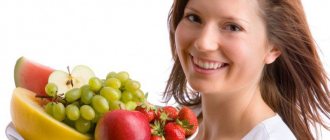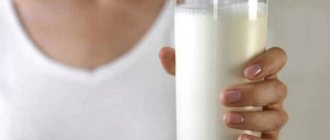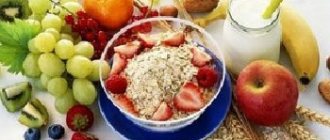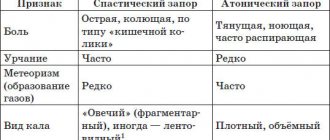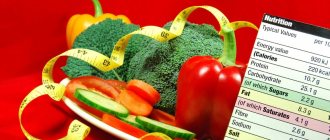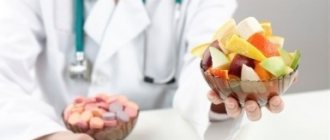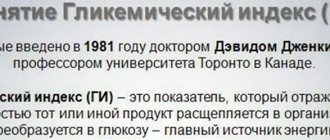- Phlebology Center
- /
- Kaliningrad
- /
- About the clinic
- /
- Helpful information
- /
- Diet for healthy veins
Almost every representative of the fair sex knows what spider veins on the legs are, which not only do not paint women’s legs, but in most cases can be the first symptom of varicose veins and over time turn into large, ugly varicose veins. Phlebologists will help you maintain the beauty and health of your veins. Also, a lot depends on your active lifestyle and proper nutrition.
The essence and principles of proper nutrition for varicose veins
At the first signs of varicose veins, consult a doctor. He will give recommendations, which may include diet correction. Making some simple changes to your diet can help prevent and treat varicose veins.
The diet for varicose veins is based on the following principles:
- inclusion of fiber in the diet (25–30 g per day);
- drinking enough water;
- reducing salt intake (no more than 6 g per day);
- limiting the consumption of low-fiber foods;
- limiting high-calorie foods that can lead to excess weight gain.
Watch your weight
To avoid increased stress on the vessels of the legs, it is important to monitor your weight. For those who are prone to obesity, you need to minimize fatty, floury, sweet foods, salty, spicy and smoked foods; rich meat broths, marinades, smoked meats, canned food - they indirectly contribute to the destruction of vascular walls and valves.
Your care and attention to health, following simple nutritional recommendations, as well as preventive visits to a phlebologist will help preserve the beauty of your legs, which always evokes the admiring glances of men.
What foods are useful in treating varicose veins?
Cellulose
- Whole grains (whole grain bread, barley, oatmeal, brown rice).
- Various nuts, seeds.
- Vegetables, legumes (spinach, broccoli, potatoes with skin, carrots, zucchini).
- Fruits and berries (apples, peaches, pears, tangerines, raspberries).
High-fiber foods improve digestion and help prevent constipation, which negatively affects the health of veins and their valves.
Potassium
- Vegetables, legumes (green leafy vegetables, potatoes, white beans, lentils).
- Fruits (oranges, bananas).
- Dried fruits (dried apricots, prunes).
- Nuts (almonds, pistachios).
- Fish (salmon, tuna).
Foods high in potassium can help reduce water retention.
Bioflavonoids
- Vegetables (broccoli, bell pepper, spinach, onion, garlic).
- Fruits and berries (citrus fruits, apples, grapes, cherries, blueberries).
- Cocoa.
Flavonoids improve blood circulation, reduce the risk of blood clots and capillary permeability, and help lower blood pressure.
Authorized Products
The diet of a patient with varicose veins should include lean poultry (turkey, chicken), rabbit, lean beef, and beef liver.
All types of seafood (mussels, squid, crabs, oysters, shrimp) and fish, seaweed and other seaweed are extremely healthy.
The diet includes foods rich in unsaturated fatty acids - vegetable oils, nuts, flax seeds, cauliflower.
Vegetables and fruits are especially useful - bell peppers, tomatoes, carrots, zucchini, potatoes, garden herbs, sauerkraut, which can be consumed in various forms, both separately and in salads, as well as berries and fruits - apples, apricots, citrus fruits, cherry, black currant.
It is useful to include various grains in the diet, both in the form of porridges and breads.
Low-fat cottage cheese and fermented milk products are recommended for dairy products.
The bread is whole grain.
To saturate the body with fluid, it is recommended to drink mineral still water, juices, green, fruit or herbal tea, fruit drinks, jelly, and compotes.
Table of permitted products
| Proteins, g | Fats, g | Carbohydrates, g | Calories, kcal | |
Vegetables and greens | ||||
| boiled cauliflower | 1,8 | 0,3 | 4,0 | 29 |
| canned grape leaves | 4,3 | 2,0 | 11,7 | 69 |
| carrot | 1,3 | 0,1 | 6,9 | 32 |
| cucumbers | 0,8 | 0,1 | 2,8 | 15 |
| salad pepper | 1,3 | 0,0 | 5,3 | 27 |
| boiled beets | 1,8 | 0,0 | 10,8 | 49 |
| tomatoes | 0,6 | 0,2 | 4,2 | 20 |
| dill | 2,5 | 0,5 | 6,3 | 38 |
| garlic | 6,5 | 0,5 | 29,9 | 143 |
Fruits | ||||
| apricots | 0,9 | 0,1 | 10,8 | 41 |
| oranges | 0,9 | 0,2 | 8,1 | 36 |
| cherry | 0,8 | 0,5 | 11,3 | 52 |
| grapefruit | 0,7 | 0,2 | 6,5 | 29 |
Berries | ||||
| cranberry | 0,5 | 0,0 | 6,8 | 26 |
| gooseberry | 0,7 | 0,2 | 12,0 | 43 |
| Rowan | 1,5 | 0,1 | 10,9 | 50 |
| currant | 1,0 | 0,4 | 7,5 | 43 |
| rose hip | 1,6 | 0,0 | 14,0 | 51 |
Nuts and dried fruits | ||||
| dried apricots | 5,2 | 0,3 | 51,0 | 215 |
| prunes | 2,3 | 0,7 | 57,5 | 231 |
Cereals and porridges | ||||
| buckwheat (kernel) | 12,6 | 3,3 | 62,1 | 313 |
| cereals | 11,9 | 7,2 | 69,3 | 366 |
| Wheat groats | 11,5 | 1,3 | 62,0 | 316 |
Bakery products | ||||
| whole grain bread | 10,1 | 2,3 | 57,1 | 295 |
Confectionery | ||||
| jam | 0,3 | 0,1 | 56,0 | 238 |
Raw materials and seasonings | ||||
| honey | 0,8 | 0,0 | 81,5 | 329 |
Dairy | ||||
| kefir 3.2% | 2,8 | 3,2 | 4,1 | 56 |
| sour cream 15% (low fat) | 2,6 | 15,0 | 3,0 | 158 |
Cheeses and cottage cheese | ||||
| cottage cheese | 17,2 | 5,0 | 1,8 | 121 |
Meat products | ||||
| lean pork | 16,4 | 27,8 | 0,0 | 316 |
| beef | 18,9 | 19,4 | 0,0 | 187 |
| beef liver | 17,4 | 3,1 | 0,0 | 98 |
| calf liver | 19,2 | 3,3 | 4,1 | 124 |
| mutton | 15,6 | 16,3 | 0,0 | 209 |
| rabbit | 21,0 | 8,0 | 0,0 | 156 |
| beef stew | 14,1 | 17,4 | 0,0 | 214 |
Bird | ||||
| chicken liver | 20,4 | 5,9 | 1,4 | 140 |
| turkey | 19,2 | 0,7 | 0,0 | 84 |
| turkey liver | 19,5 | 22,0 | 0,0 | 276 |
| goose liver | 15,2 | 39,0 | 0,0 | 412 |
Eggs | ||||
| chicken eggs | 12,7 | 10,9 | 0,7 | 157 |
Fish and seafood | ||||
| brown algae | 1,7 | 0,6 | 8,3 | 43 |
| pink salmon | 20,5 | 6,5 | 0,0 | 142 |
| Red caviar | 32,0 | 15,0 | 0,0 | 263 |
| cod roe | 24,0 | 0,2 | 0,0 | 115 |
| pike caviar | 17,3 | 2,0 | 0,0 | 87 |
| squid | 21,2 | 2,8 | 2,0 | 122 |
| shrimps | 22,0 | 1,0 | 0,0 | 97 |
| salmon | 19,8 | 6,3 | 0,0 | 142 |
| mussels | 9,1 | 1,5 | 0,0 | 50 |
| seaweed | 0,8 | 5,1 | 0,0 | 49 |
| herring | 16,3 | 10,7 | — | 161 |
| cod (liver in oil) | 4,2 | 65,7 | 1,2 | 613 |
| trout | 19,2 | 2,1 | — | 97 |
Oils and fats | ||||
| vegetable oil | 0,0 | 99,0 | 0,0 | 899 |
| butter | 0,5 | 82,5 | 0,8 | 748 |
| olive oil | 0,0 | 99,8 | 0,0 | 898 |
| * data is per 100 g of product |
Example menu for varicose veins
The menu should be balanced and varied and include vegetables, fruits, whole grains, and lean protein. For example, for breakfast you can eat oatmeal with a banana, for lunch - bean soup and salad, and for dinner - boiled chicken breast with vegetable stew. You can snack on nuts, dried fruits or fruits.
Before developing a menu, consult your doctor. A specialist will assess your health and give recommendations on what to eat if you have varicose veins, and what foods are prohibited. Treatment of varicose veins is complex and, in addition to diet correction, may include taking venotonics, surgery and physical therapy.
Nutritional Features
The basic principles of nutrition for varicose veins are as follows:
- Diet for arthritis of the fingers - a complete menu for the week with photos
- products that can retain water in the body, causing tissue pastiness and extra pounds (sweets, baked goods, pickles, smoked meats, marinades, fast food) are excluded;
- support for normal liver function is ensured, for which fatty, fried and spicy foods and canned food are removed from the diet. artificial colors;
- to prevent blood viscosity, fresh fruits, vegetables, sprouted grains, cereals, low-fat milk derivatives, berries, and herbs are added to the daily menu;
- Weekly fasting days are organized based on monoproducts - kefir, apple, rice;
- the drinking ration is calculated per kilogram of the patient’s weight (4 ml per kilogram), thick blood slows down the blood flow, promotes stagnation in the capillaries, so it is difficult for the myocardium to pump it, lift it up, which provokes varicose veins;
- the principle of nutrition is fractional (every 2-3 hours), portions are the size of a palm, the last meal is three hours before bedtime, all this speeds up metabolism and helps normalize blood flow;
- food is steamed or boiled, baked, stewed;
- it is necessary to completely give up smoking and alcohol, which provokes blood clots due to the action of toxins on blood vessels and blood components;
- instead of strong tea, coffee, sweet soda, use herbal teas, compotes, fruit drinks, which saturate the body with minerals and vitamins;
- The total calorie content of the diet, without gender differences, for varicose veins is 30 kcal per kilogram of weight. If there is a need to lose extra pounds, then for women – 1,200 kcal, for men – 1,500 kcal.
Reviews and results
- “... After the second birth, my problems with the veins of my legs began. At first small bumps appeared, and then pain. Now we have a complete picture of legs disfigured by varicose veins. The phlebologist suggests laser surgery, but I’m hesitant about it yet. I take all the medications prescribed by the doctor, wear compression stockings, low-heeled shoes, and go on a diet as recommended by the doctor. I just don't know if this will help or not. I wouldn’t like to undergo surgery”;
- “... I have been suffering from varicose veins on my legs for almost 10 years. Varicose veins appeared after hard work in a mine. I have already tried almost all ointments, physiotherapy, special stockings and of course medications. I try to eat right, quit smoking and drinking alcohol. So far we have managed to avoid surgery.”
Diet for varicose veins of the esophagus
Varicose veins of the esophagus occur due to a violation of the outflow of blood from the venous vessels of the esophagus through the portal and superior vena cava system. This venous disease is typical for patients of any age.
!
At the same time, the incidence of the disease in men is twice as high as in women; this is mainly due to excessive consumption of alcohol-containing drinks.
The diet for esophageal vein disease comes down to excluding a number of foods from the menu. Their list is given above. It can only be supplemented with a product such as sugar, the use of which will also have to be abandoned.
It is also important to eat large portions; the longer the gap between meals, the better. In no case should you neglect breakfast. In the morning, you should give preference to fatty foods: omelet, scrambled eggs, cod liver.
Vitamins and minerals that should be found in foods
First of all, it is vitamin E. It is a powerful antioxidant that protects cell walls. Products that contain this substance are eggs, oils, as well as lettuce and nuts.
- Vitamin C - helps remove antioxidants, reduce blood viscosity, and strengthen venous walls. These are citrus fruits, cabbage, apples, and unprocessed berries.
- Copper, contained in seafood or seaweed, strengthens the walls of blood vessels, strengthens them, and also participates in the synthesis of elastane, the main component of the vascular wall.
- Silicon, coming from wheat, cereals, legumes, beans and grapes, produces collagen and elastin. In sufficient quantities, it participates in strengthening the vascular wall.
- The fiber contained in the composition stimulates the motility of the gastrointestinal tract and also prevents the formation of constipation.
Colored diet
One of the modern fashion trends in nutrition is the colored diet. It is based on daily changing the diet of plant foods based on their color. The theoretical justification for this diet is that the colors of vegetables and fruits mean the presence of certain beneficial substances necessary for blood vessels. Eating foods of the same color every day is more convenient for the digestive system, which specifically secretes enzymes for the complete absorption of complex substances of the same type.
For example, fruits acquire yellow and orange shades thanks to beta-carotenes - a whole family of pigments and B vitamins. Blue and purple colors are due to the high content of fucoxanthins. Greens rich in chlorophyll are known for their high concentration of micronutrients such as calcium, magnesium, potassium, etc. Red berries, fruits and vegetables contain the most vitamin C.
The effectiveness of the colored diet has been confirmed in practice, due to which it is constantly recommended by many nutritionists as the most rational way to saturate the body with vitamins and minerals of plant origin.
Author of the article:
Kuzmina Vera Valerievna |
Endocrinologist, nutritionist Education: Diploma of the Russian State Medical University named after. N.I. Pirogov, specialty “General Medicine” (2004). Residency at the Moscow State Medical and Dental University, diploma in Endocrinology (2006). Our authors
Fully or partially limited products
Strong meat broths, fatty varieties of red meat, goose meat, duck meat, boiled and smoked sausages, canned meat, bacon, ham, cooking and animal fat, mayonnaise, baked goods, confectionery, as well as heavy cream, cottage cheese, sweets are excluded from the diet. cheesecakes and yogurt, baked milk, fried chicken eggs, salty and fatty cheeses, semolina and oatmeal, pasta, legumes, white rice.
Table salt and salty foods, dishes, spices and seasonings that stimulate the appetite are subject to restrictions.
Limit the consumption of coffee and black tea.
The consumption of smoked meats, marinades, and alcohol-containing drinks is not allowed.
Table of prohibited products
| Proteins, g | Fats, g | Carbohydrates, g | Calories, kcal | |
Cereals and porridges | ||||
| wheat bran | 15,1 | 3,8 | 53,6 | 296 |
Confectionery | ||||
| cake | 3,8 | 22,6 | 47,0 | 397 |
Cakes | ||||
| cake | 4,4 | 23,4 | 45,2 | 407 |
Chocolate | ||||
| chocolate | 5,4 | 35,3 | 56,5 | 544 |
Raw materials and seasonings | ||||
| mayonnaise | 2,4 | 67,0 | 3,9 | 627 |
Dairy | ||||
| milk | 3,2 | 3,6 | 4,8 | 64 |
| cream 35% (fat) | 2,5 | 35,0 | 3,0 | 337 |
| sour cream 30% | 2,4 | 30,0 | 3,1 | 294 |
Cheeses and cottage cheese | ||||
| cheese | 24,1 | 29,5 | 0,3 | 363 |
Meat products | ||||
| fried pork | 11,4 | 49,3 | 0,0 | 489 |
| pork fat | 1,4 | 92,8 | 0,0 | 841 |
| bacon | 23,0 | 45,0 | 0,0 | 500 |
Sausages | ||||
| smoked sausage | 28,2 | 27,5 | 0,0 | 360 |
Bird | ||||
| duck | 16,5 | 61,2 | 0,0 | 346 |
| goose | 16,1 | 33,3 | 0,0 | 364 |
Fish and seafood | ||||
| fried fish | 19,5 | 11,7 | 6,2 | 206 |
Oils and fats | ||||
| cooking fat | 0,0 | 99,7 | 0,0 | 897 |
| rendered pork fat | 0,0 | 99,6 | 0,0 | 896 |
Alcoholic drinks | ||||
| white dessert wine 16% | 0,5 | 0,0 | 16,0 | 153 |
| vodka | 0,0 | 0,0 | 0,1 | 235 |
| cognac | 0,0 | 0,0 | 0,1 | 239 |
| liquor | 0,3 | 1,1 | 17,2 | 242 |
| beer | 0,3 | 0,0 | 4,6 | 42 |
Non-alcoholic drinks | ||||
| cola | 0,0 | 0,0 | 10,4 | 42 |
| coffee | 0,2 | 0,0 | 0,3 | 2 |
| Pepsi | 0,0 | 0,0 | 8,7 | 38 |
| black tea | 20,0 | 5,1 | 6,9 | 152 |
| energy drink | 0,0 | 0,0 | 11,3 | 45 |
| * data is per 100 g of product | ||||
General rules
Varicose veins (VVEs) are based on valvular insufficiency of the peripheral superficial or deep veins. The term “varicose veins” is associated, as a rule, with pathological changes in the veins of the lower extremities of the veins, although the problem of varicose veins is much wider and there are other types of disease - varicose veins of the esophagus ( phlebectasia ), varicose veins of the rectum ( hemorrhoids ), pelvic varicose veins (varicose veins of the small pelvis), varicose veins of the female genital organs, varicocele (dilation of the veins of the spermatic cord).
In the complex treatment of varicose veins, especially in the early stages of the disease, conservative therapy, including medication, special exercises, massage and diet, becomes more important. As such, there is no standardized diet for venous insufficiency and diet is not used as an independent measure in the treatment of varicose veins, but as an auxiliary method, diet in combination with other measures gives a good effect and allows you to stop the progression of the disease. The diet for varicose veins in the legs should be aimed at:
- normalization of body weight;
- strengthening the walls of venous vessels;
- reducing blood viscosity to lower blood pressure and improve its trophic properties;
- Relieving swelling while meeting the body's fluid needs.
The diet for varicose veins of the legs is based on the principles of rational nutrition and does not provide for any strict restrictions. If the patient has increased body weight, then in such cases dietary nutrition should be aimed primarily at normalizing weight, since “extra pounds” place an increased load on the venous system of the lower extremities. For this purpose, a physiologically complete diet with a reduced calorie content (2300-2400 Kcal) is prescribed if the weight is slightly higher than normal or Dietary Table No. 8 according to Pevzner in the presence of obesity (1600-1700 Kcal).
The energy value of the diet is reduced due to easily digestible fats (mainly animal fats) and carbohydrates, with a physiologically normal protein content. Limits on fatty varieties of red meat, boiled and smoked sausages, goose meat, duck meat, canned meat, ham, cooking and animal fat, baked goods, confectionery products, mayonnaise, as well as heavy cream, cottage cheese, baked milk, sweet cheesecakes and yogurt, salty and fatty cheeses, fried chicken eggs, semolina and oatmeal, pasta, legumes, rice. Table salt, foods and dishes that stimulate the appetite, strong meat broths and free liquid are subject to restrictions.
At normal weight, the basis of the diet should be whole grains, vegetables, and fruits. They contain a fairly large amount of fiber, from which fibrous fibers are synthesized that strengthen the walls of the veins. In the diet, the consumption of fatty and fried foods, spicy and salty foods is limited, since the thirst they provoke causes excessive fluid intake, which causes an increase in blood volume and, accordingly, overload of the venous system. In addition, smoked, fried and spicy foods in large quantities negatively affect the rheological properties of blood (increase its viscosity), thereby increasing the risk of blood clots . In addition, food rich in cholesterol contributes to the development of atherosclerosis with the formation of atherosclerotic deposits on the walls of blood vessels and narrowing of their lumen.
Bell peppers, cabbage of various types, carrots, tomatoes, seasoned with any vegetable oil with the addition of garden herbs, saturate the body with vitamins and microelements, help improve elasticity and strengthen the walls of blood vessels. Jacket potatoes, sprouted grains of rye, oats, wheat, garlic, as well as black currants, gooseberries, rose hips and strawberries have a similar effect. The diet should include various porridges, beef liver, seaweed, nuts and dried fruits, rye bread, garlic, herbal infusions and green tea.
In order to strengthen the vascular endothelium of the leg veins and improve blood circulation, the diet should include foods containing organic flavonoids and antioxidants , which can prevent damage to the walls of venous vessels and increase their impermeability to fluid. Large amounts of these substances are found in berries, citrus fruits, apples, large-leaf green tea, as well as freshly squeezed juice from natural berries, fruits and vegetables. They are especially rich in rutin ( vitamin P ), which effectively reduces capillary fragility.
Flavonoids also reduce pain by blocking leukocyte aggression (inhibiting the process of adhesion and migration of neutrophil leukocytes ). Biologically active flavonoids ( isoquercetin and quercetin glucuronide ) contained in red grape leaves, as well as saponins contained in horse chestnut, have pronounced capillary-protective and anti-edematous effects. Dishes from these plants must be present in the diet - in the form of dolma, baked chestnuts.
It is recommended to limit the consumption of meat, replacing it with seafood (squid, crabs, mussels, shrimp, oysters) and fish. These products, along with beef liver, contain a lot of copper, which activates enzymes involved in the synthesis of an important component of the venous wall - elastin.
A prerequisite for proper nutrition for varicose veins of the lower extremities is limiting salt, which contributes to fluid retention in the body and limiting fluid intake (in the presence of edema ). It is the correctly selected drinking regime that serves to prevent blood clots. To increase efficiency, especially if you are overweight, you can arrange fasting days once every 2 weeks.
It is also recommended to include foods rich in magnesium in the menu, since a decrease in magnesium ions and an accumulation of calcium ions causes spasm of smooth muscle fibers and the appearance of cramps and pain. Foods high in magnesium include sesame seeds, pumpkin seeds, spinach, pine nuts, and wheat bran.
Long-term disruption of venous outflow often provokes the formation of blood clots in deep ( thrombosis ) or varicose veins affected by the saphenous veins ( thromphlebitis ). The diet for varicose veins and thrombophlebitis is not fundamentally different, however, it is additionally necessary to exclude from the diet foods containing vitamin K , which is an active component of the blood clotting process - beef/pork liver, spinach, beans, celery, cauliflower, watercress, kale , broccoli, seaweed. If you have already developed thrombophlebitis, it is recommended to include a mixture of garlic, onions, lemons and honey in your diet (100 g honey, 200 g onions, 50 g lemon, 100 g garlic) and take 1 tsp. 3 times a day. It is also recommended to take additional vitamins A , E , P and the vitamin preparation Ascorutin , dietary supplement Hawthorn forte .


